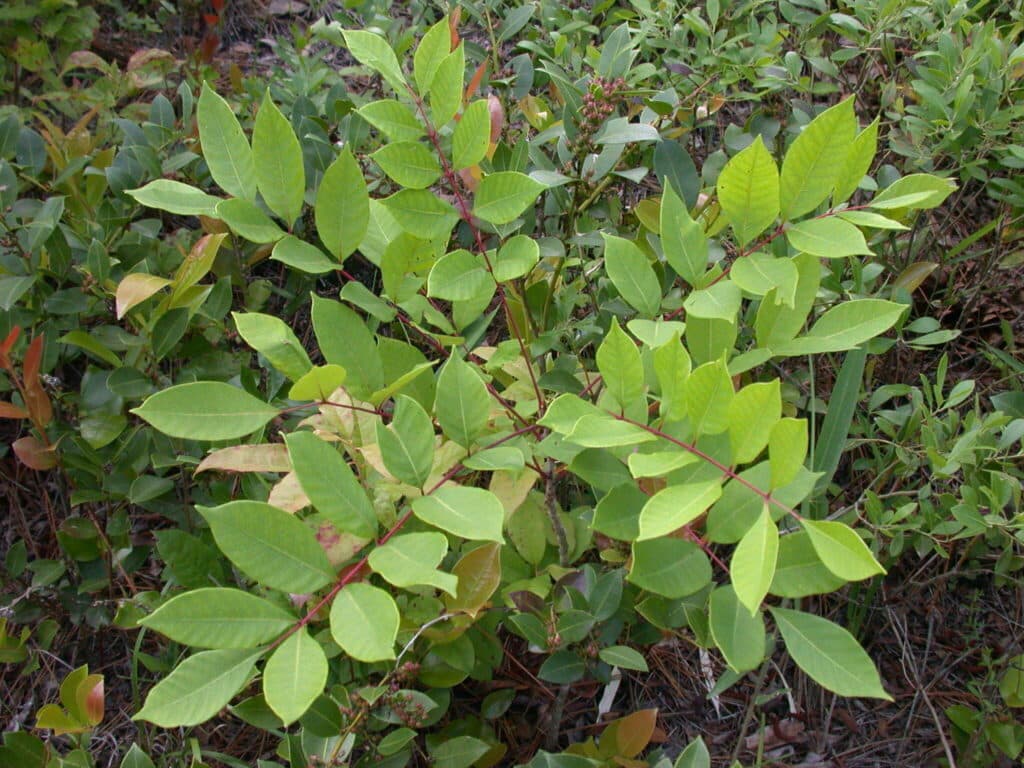Poison Sumac Rash: Stages & Treatment

Every summer, thousands of people get poison sumac rash when they contact the urushiol oil on the plants. Most symptoms are redness and itching. However, some people may also experience blistering, swelling, and a burning sensation.
You could try treating it yourself with home remedies, but some may not be healthy for your skin. To learn more about how to prevent & treat Poison Sumac Rash, let's begin.
What is poison sumac?
Poison sumac, or Toxicodendron vernix, is a plant that grows in the swampy areas of southeastern and northern U.S. The sap of the poison sumac contains urushiol, which can cause severe skin irritation when exposed to human skin. This sap is released through any damage done to the plant. When it's cut, burned, or if someone touches it barehanded, urushiol oil is released into the air and onto human skin. This causes dermatitis—inflammation of the skin—and produces a similar rash to contact dermatitis from poison ivy.
To be clear: poison sumac is NOT poison ivy!
- Poison ivy grows as a vine, with smooth, three-parted leaves. Poison sumac grows as a shrub or a small tree and has 7–13 leaflets divided into 3–7 lobes.
- Poison ivy's leaves are green with white hairs. Poison sumac's leaves are green with reddish hairs.
What does poison sumac rash look like?
Poison sumac rash looks different on every person, but there are some commonalities. It usually begins with small, red bumps that become blisters filled with fluid. The rash and blistering can spread. Poison sumac rash should be treated as soon as possible because it can last for weeks without treatment. The rash is often very itchy. Symptoms of poison sumac rash typically begin between 8 and 48 hours after exposure, and will progress through four stages.
Stages of poison sumac rash
Stage 1: Itchiness and swelling
This occurs when you touch the plant or come into indirect contact with the plant’s oil by brushing against something or someone else who touched it. You might not even notice it at first, but the itchiness and swelling that starts to occur on your skin is the first stage of a poison sumac rash. Your body's immune system reacts to the chemicals in urushiol oil, which causes the rash. Your skin will also start to swell and itch. This happens due to the increase of histamines in your body. The rash will appear after 12-24 hours, so during this initial stage you might not even realize you've come into contact with poison sumac yet.
Stage 2: Blisters filled with fluid
After about 24 hours, fluid-filled blisters will appear at the site of contact on your skin. At this point, you'll know what's happening—and it's going to be a bad time for you. These bumps are very itchy, and they can get pretty gross if they pop or rupture. They can spread, but they will also be painful at this stage.
Stage 3: Weeping
As time passes, these fluid-filled blisters will grow larger. They may break open and begin weeping fluid out onto the surface of your skin. This is a common symptom of poison ivy and poison sumac because it means your immune system is reacting to the rash. Your body releases histamines into your bloodstream to attack the source of the rash that causes the skin to become red and bumpy.
Stage 4: Scabs/crusts
Scabs fall off, leaving dark spots on your skin.
How to treat poison sumac rash?
Once exposed to poison sumac, it is important to wash away the oil immediately to prevent an allergic reaction. Here are three steps for how to treat your poison sumac rash:
- Wash the affected area with Tecnu Original Cleanser or Tecnu Extreme Poison Ivy Scrub as soon as possible after exposure.
- Rinse off with water and then pat the skin dry. If a rash begins to form, repeat this process twice a day for three days to stop urushiol from binding to your skin and spreading the rash.
- To relieve the symptoms apply Calagel Anti-itch Gel after washing the area. If you have any open sores or blisters, you may loosely cover them with a bandage.
Conclusion
To sum up, like poison ivy and poison oak, poison sumac can be frustrating to deal with. The itchy red rash that they cause can be painful and very hard to get rid of. Don't panic if you develop a rash after spending time outdoors in an area where these plants grow. By following the instructions above, you can relieve the irritation and allow your body to heal. To know more about poisonous plants that cause rashes and how you can take care of them, visit Teclabs now!




